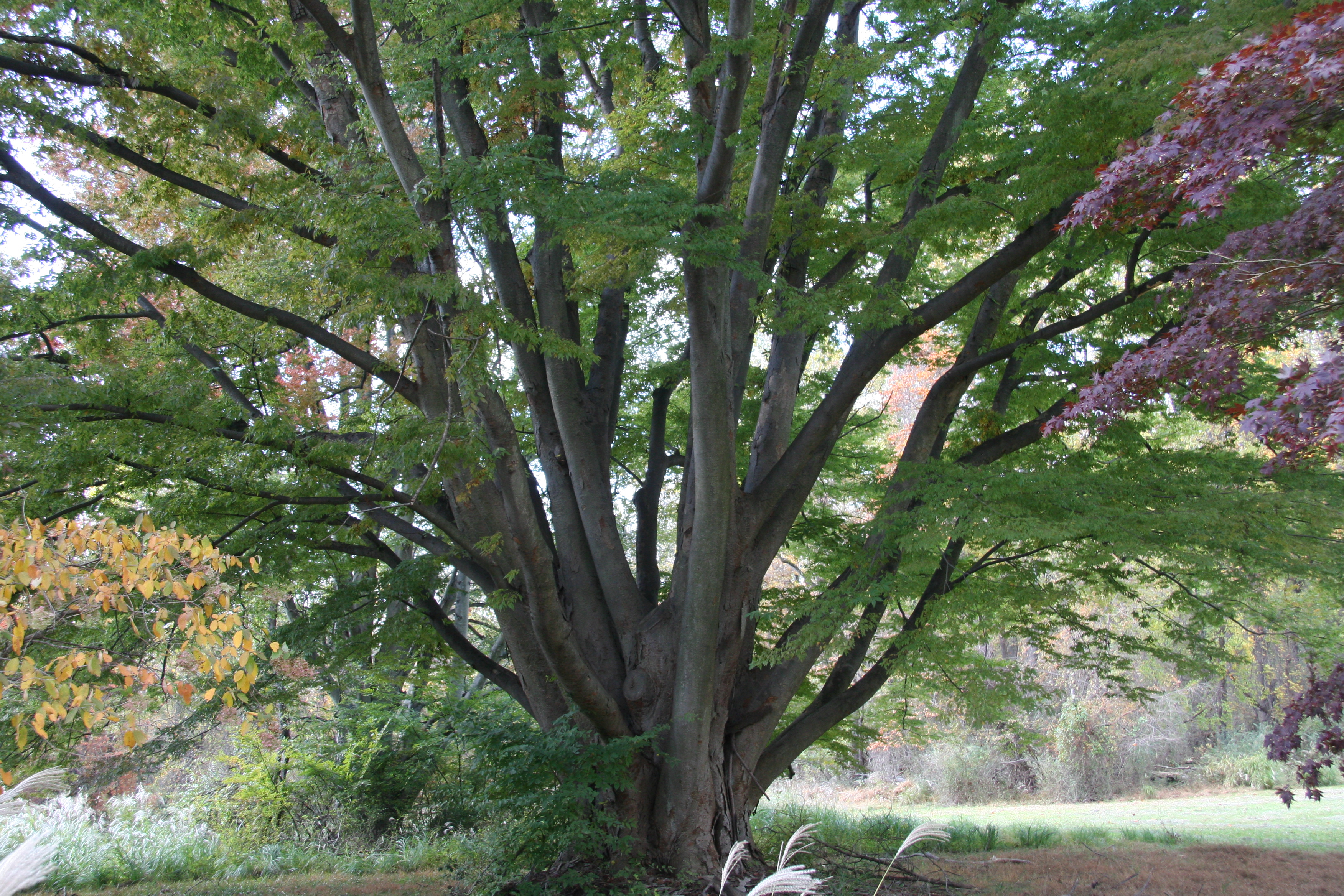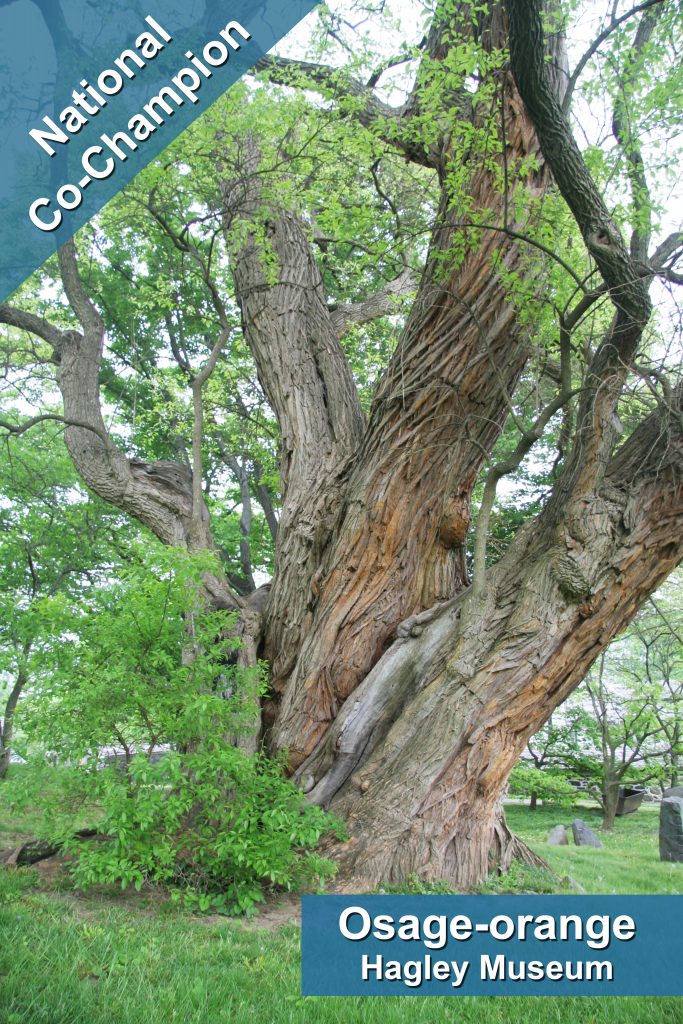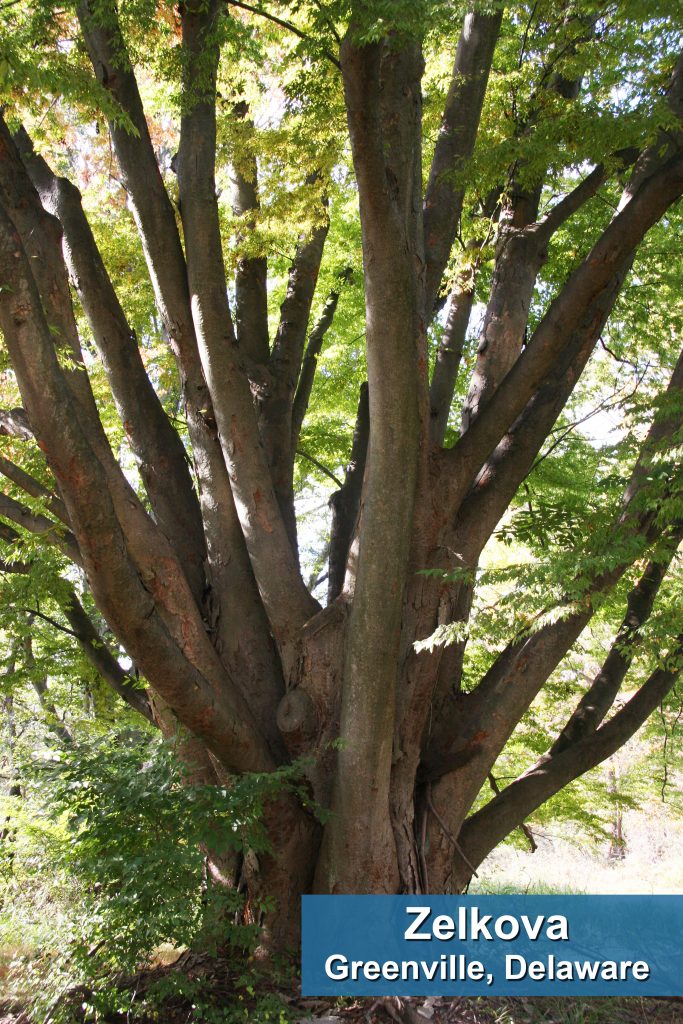New book offers guide to “Big Trees of Delaware”
Department of Agriculture | Forest Service | Kent County | New Castle County | Sussex County | Date Posted: Tuesday, May 21, 2019
Department of Agriculture | Forest Service | Kent County | New Castle County | Sussex County | Date Posted: Tuesday, May 21, 2019

Contact:
William Seybold, Delaware Forest Service
william.seybold@delaware.gov or (302) 698-4553
DOVER, Del. — The Delaware Forest Service has published the newest edition of its popular “Big Trees of Delaware,” a comprehensive list of the largest trees covering nearly 80 native and non-native species in the First State. Featuring full-color photos and high-quality illustrations of tree leaves, the book is available as a print edition at state forest offices, as well as an online PDF version to be downloaded or viewed on a web browser. There is no cost for the book.
There is also an ESRI “story map” application spotlighting Delaware’s “Big Tree Champs” that includes an interactive location-based guide to many of the champion trees.
“The new Big Trees of Delaware, 5th Edition is the culmination of many hours of hard work by Delaware Forest Service staff who went to public museums, parks, gardens, and private lands throughout the First State to measure these trees. While a good number of champion trees have carried over from the previous fourth edition, there are also many new champions. We hope the public will use this book as a valuable guide to go visit some of these amazing big trees, as well as learn to identify the unique characteristics and features of each tree species,” said Bill Seybold, the Delaware Forest Service’s forest health specialist who oversee its “Big Trees” program. “Maybe someone will notice a big tree and nominate it as a possible candidate to be included in our next edition.”
 Delaware’s “Big Tree” program is affiliated with the National Register of Big Trees, a list of the largest living specimens of each tree variety found in the continental United States. A tree on this list is called a “National Champion Tree.” The directory has been maintained since 1940 by American Forests. Founded in 1875 as the American Forestry Association (AFA), American Forests is the oldest national conservation organization in the United States. To be eligible, a species must be recognized as native or naturalized in the continental U.S., including Alaska.
Delaware’s “Big Tree” program is affiliated with the National Register of Big Trees, a list of the largest living specimens of each tree variety found in the continental United States. A tree on this list is called a “National Champion Tree.” The directory has been maintained since 1940 by American Forests. Founded in 1875 as the American Forestry Association (AFA), American Forests is the oldest national conservation organization in the United States. To be eligible, a species must be recognized as native or naturalized in the continental U.S., including Alaska.
Currently, only one tree in Delaware is listed on the National Register of Big Trees: an Osage-orange (Maclura pomifera) at Hagley Museum in Wilmington. At 412 points, it is considered a “co-champion” tree because it is within five points of two trees located in Virginia (416 points and 414 points respectively).
Three distinct measurements are used to compare trees of the same species. These numbers are added to create a total point value and the tree with the most points is crowned a “champion tree.” If a tree is within five points of a champion, it is called a “co-champion.”
1. Circumference:
Circumference at Breast Height (or CBH as it is often referred) is measured in inches at a point on the tree trunk 4-1/2 feet above the ground. If a tree grows on a slope, the 4-1/2 foot point is determined from its uphill side. The tree must have a single trunk for a least 4-1/2 feet to be deemed a single tree. A tree forked below 4-1/2 feet is considered two trees. One point is given for each inch of circumference.
2. Height:
Tree height is measured from the ground line to the highest point on the tree. If a tree grows on a slope, the line is determined from the uphill side. Height measurements are difficult to make without a proper instrument, and most professional foresters use an Abney level or a clinometer. One point is given for each foot of height.
3. Average Crown Spread:
Two measurements are taken at the outer edges (drip line) of the spreading crown to measure its average spread. Measurements are recorded in feet at the widest point of crown spread and at the narrowest point. These two measurements are added together and divided by two to get the average crown spread. One-fourth of a point is given for each one foot of average crown spread (or one point for each four feet of spread).

Keep up to date by receiving a daily digest email, around noon, of current news release posts from state agencies on news.delaware.gov.
Here you can subscribe to future news updates.
Department of Agriculture | Forest Service | Kent County | New Castle County | Sussex County | Date Posted: Tuesday, May 21, 2019

Contact:
William Seybold, Delaware Forest Service
william.seybold@delaware.gov or (302) 698-4553
DOVER, Del. — The Delaware Forest Service has published the newest edition of its popular “Big Trees of Delaware,” a comprehensive list of the largest trees covering nearly 80 native and non-native species in the First State. Featuring full-color photos and high-quality illustrations of tree leaves, the book is available as a print edition at state forest offices, as well as an online PDF version to be downloaded or viewed on a web browser. There is no cost for the book.
There is also an ESRI “story map” application spotlighting Delaware’s “Big Tree Champs” that includes an interactive location-based guide to many of the champion trees.
“The new Big Trees of Delaware, 5th Edition is the culmination of many hours of hard work by Delaware Forest Service staff who went to public museums, parks, gardens, and private lands throughout the First State to measure these trees. While a good number of champion trees have carried over from the previous fourth edition, there are also many new champions. We hope the public will use this book as a valuable guide to go visit some of these amazing big trees, as well as learn to identify the unique characteristics and features of each tree species,” said Bill Seybold, the Delaware Forest Service’s forest health specialist who oversee its “Big Trees” program. “Maybe someone will notice a big tree and nominate it as a possible candidate to be included in our next edition.”
 Delaware’s “Big Tree” program is affiliated with the National Register of Big Trees, a list of the largest living specimens of each tree variety found in the continental United States. A tree on this list is called a “National Champion Tree.” The directory has been maintained since 1940 by American Forests. Founded in 1875 as the American Forestry Association (AFA), American Forests is the oldest national conservation organization in the United States. To be eligible, a species must be recognized as native or naturalized in the continental U.S., including Alaska.
Delaware’s “Big Tree” program is affiliated with the National Register of Big Trees, a list of the largest living specimens of each tree variety found in the continental United States. A tree on this list is called a “National Champion Tree.” The directory has been maintained since 1940 by American Forests. Founded in 1875 as the American Forestry Association (AFA), American Forests is the oldest national conservation organization in the United States. To be eligible, a species must be recognized as native or naturalized in the continental U.S., including Alaska.
Currently, only one tree in Delaware is listed on the National Register of Big Trees: an Osage-orange (Maclura pomifera) at Hagley Museum in Wilmington. At 412 points, it is considered a “co-champion” tree because it is within five points of two trees located in Virginia (416 points and 414 points respectively).
Three distinct measurements are used to compare trees of the same species. These numbers are added to create a total point value and the tree with the most points is crowned a “champion tree.” If a tree is within five points of a champion, it is called a “co-champion.”
1. Circumference:
Circumference at Breast Height (or CBH as it is often referred) is measured in inches at a point on the tree trunk 4-1/2 feet above the ground. If a tree grows on a slope, the 4-1/2 foot point is determined from its uphill side. The tree must have a single trunk for a least 4-1/2 feet to be deemed a single tree. A tree forked below 4-1/2 feet is considered two trees. One point is given for each inch of circumference.
2. Height:
Tree height is measured from the ground line to the highest point on the tree. If a tree grows on a slope, the line is determined from the uphill side. Height measurements are difficult to make without a proper instrument, and most professional foresters use an Abney level or a clinometer. One point is given for each foot of height.
3. Average Crown Spread:
Two measurements are taken at the outer edges (drip line) of the spreading crown to measure its average spread. Measurements are recorded in feet at the widest point of crown spread and at the narrowest point. These two measurements are added together and divided by two to get the average crown spread. One-fourth of a point is given for each one foot of average crown spread (or one point for each four feet of spread).

Keep up to date by receiving a daily digest email, around noon, of current news release posts from state agencies on news.delaware.gov.
Here you can subscribe to future news updates.